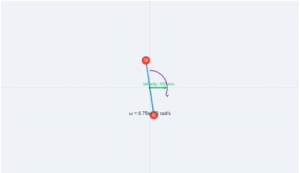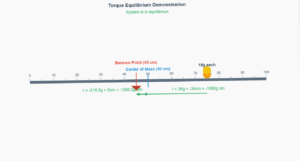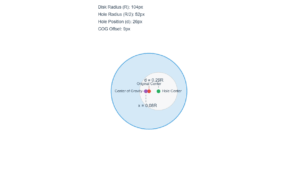Angular Kinematics Simulation
This simulation demonstrates the derivation of angular motion equations from first principles for uniformly accelerated rotation.
Example
Question:
Obtain Eq. (6.36) from first principles.
Solution:
The angular acceleration is uniform, hence
\[
\frac{d\omega}{dt} = \alpha = \text{constant}
\]
Integrating this equation,
\[
\omega = \int \alpha\,dt + c
\]
Since \(\alpha\) is constant,
\[
\omega = \alpha t + c
\]
At \( t = 0 \), \( \omega = \omega_0 \) (given)
From the above, at \( t = 0 \), \( \omega = c = \omega_0 \)
Thus,
\[
\omega = \alpha t + \omega_0
\]
as required.
With the definition \(\omega = \frac{d\theta}{dt}\), we may integrate Eq. (6.36) to get Eq. (6.37). This derivation and the derivation of Eq. (6.38) is left as an exercise.
Derivation of Eq. (7.38) from First Principles
Given: Angular acceleration is uniform (constant)
Step 1: Integrate to find angular velocity
Step 2: Apply initial condition at t = 0, ω = ω₀
Final Equation:
Extension to Angular Displacement
Using the definition ω = dθ/dt, we can integrate Eq. (7.38) to get angular displacement:
This derivation and the derivation of other angular motion equations are left as exercises.



